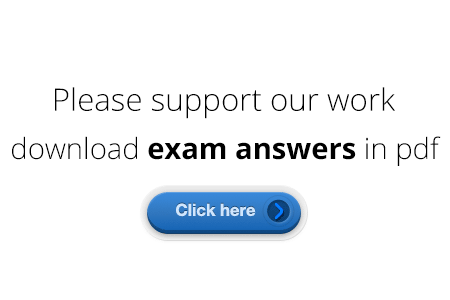Welcome to the DoubleClick Studio VPAID Badge Exam Certification
1.) What is the difference between the VPAID Linear format and the VPAID Non-Linear format?
- A) The VPAID Non-Linear format allows the video that is playing within it to be primary, so that the publisher’s player can control it.
- B) The VPAID Linear format runs pre-roll or post-roll, or interrupts the publisher’s video content, while the VPAID Non-Linear format overlays the publisher’s video content.
- C) The VPAID Non-Linear format runs pre-roll or post-roll, or interrupts the publisher’s video content, while the VPAID Linear format overlays the publisher’s video content.
- D) The VPAID Linear format can be developed in ActionScript 3, while the VPAID Non-Linear format can be developed in both ActionScript 3 and ActionScript 2.
2.) Which ActionScript version is supported by the VPAID creative format?
- A) ActionScript 2 only
- B) ActionScrip 1, ActionScript 2, and ActionScript 3
- C) ActionScript 3 only
- D) ActionScript 2, and ActionScript 3
3.) What happens to the aspect ratio of a VPAID creative when the size does not match the dimensions of the publisher’s video player?
- A) The VPAID creatives does not show within the publisher’s video player.
- B) The VPAID creative scales to fit the publisher’s video player while maintaining its aspect ratio, and it is centered with letterboxing.
- C) The VPAID creative gets stretched to fit within the publisher’s video player without letterboxing.
- D) The VPAID creative scales to fit the publisher’s video player while maintaining its aspect ratio, and it is centered without letterboxing.
4.) Which statement is not valid VPAID best practice spec?
- A) Publish the creative to be the most common Flash Player version in the media plan.
- B) Use vector graphics when possible.
- C) Enable smoothing for bitmap images and videos in the creative.
- D) Publish the creative to be the lowest Flash Player version in the media plan.
5.) How can you set a primary video to play when there are multiple videos in the VPAID creative?
- A) Call setPrimary(one) to load the your first video in the video playlist.
- B) Call setPrimary(false) on the video component that you want to be primary.
- C) Call setPrimary(true) on the video component you want to be primary, and setPrimary(false) for all other videos.
- D) Call setPrimaryVideo(true) on the video component that you want to be the primary video.
6.) The Studio Video Player component has video smoothing enabled as a default setting.
- A) True
- B) False
7.) The DoubleClick Studio components and API for full screen don’t function in VPAID creatives.
- A) True
- B) False
8.) VPAID creatives use which Enabler?
- A) VpaidEnabler
- B) InStreamEnabler
- C) HtmlEnabler
- D) F2fEnabler
9.) You should use the Loader component setting called “Wait for page load…” to polite load assets into a VPAID creative.
- A) True
- B) False
10.) How many videos in a VPAID linear creative can be controlled by the publisher’s player controls at any one time?
- A) Three
- B) None
- C) Two
- D) One
11.) What does calling enabler.setInteractive(true) do?
- A) It informs the publisher’s player that the ad is currently interactive and the time remaining is unknown.
- B) It starts the standard Rich Media Interaction metric.
- C) It presents the user with buttons to select a video.
- D) It pauses the video.
12.) You should always add a skip button in your creative.
- A) True
- B) False
13.) What’s the best description of the behavior that occurs when you select the “Close the creative when the video completes” option in the Studio video component?
- A) It completely closes an expanding VPAID non-linear ad.
- B) In a non-expanding VPAID non-linear ad, it collapses the ad. In a VPAID Linear ad that does not expand, it completely closes the ad.
- C) In an expanding VPAID non-linear ad, it collapses the ad. In a non-expanding VPAID non-linear or VPAID linear ad, it completely closes the ad.
- D) It collapses a non-expanding VPAID non-linear.
14.) Fill in the blanks for the following code snippet to make an expanding non-linear VPAID change into VPAID Linear mode upon expansion using our Studio API.
expandButton.addEventListener(MouseEvent.CLICK, expandClickHandler);
function expandClickHandler(event::MouseEvent):void {
enabler.setLinear(____);
}
15.) Fill in the blanks for the following code snippet to make a VPAID Linear ad close using our Studio API.
closeButton.addEventListener(MouseEvent.CLICK, closeClickHandler);
function closeClickHandler(event:MouseEvent):void {
enabler.____();
}
16.) Drag-and-drop the code order displayed when flash traces the output logs of a collapsing an expanding non-linear VPAID ad.
- A) Enabler: Ad collapsed
- B) Expanding component event: collapseComplete
- C) Enabler: Logged manual close
- D) Expanding component event: collapseBegin
17.) When should the StudioEvent.START event listener be added in Flash for VPAID non-linear auto expand ads?
- A) It should be added after the video has buffered.
- B) It should be added before the enabler.init() is called.
- C) It should be added after the Expanding.startExpanded() API.
- D) It should be added after the Expanding.expand() is called.
18.) Which Studio VPAID API method allows VPAID Linear ads to remain open, rather than closing when it reaches the Duration time specified in the Studio UI?
- A) expanding.expand();
- B) enabler.open();
- C) expanding.setCollapseOnMouseOut(true);
- D) enabler.setInteractive(true);
19.) Which VPAID specs are priority when developing a creative?
- A) Publishers who do not restrict VPAID behaviors.
- B) VPAID requirements found on the IAB site.
- C) Standard LCDs found in the Rich Media Help Center.
- D) Specs collected from publishers on the media plan.
20.) What reporting is available for VPAID creatives?
- A) VAST metrics
- B) Rich Media metrics
- C) Custom metrics
- D) All of the above
21.) When can a companion banner for VPAID creative be uploaded?
- A) In DFA, after the creative is pushed from Studio.
- B) In Studio, on the Preview tab.
- C) In Studio, on the Assets tab.
- D) VPAID creatives do not support companion banners.
22.) The duration for a creative can be adjusted after a creative has been pushed from Studio to DFA.
- A) True
- B) False
23.) How can you ensure that your creative runs only as long as the length of the video?
- A) Select “Set duration to video’s duration” during the DFA trafficking process.
- B) Use our VPAID API called enabler.setDuration(videoInstance.duration).
- C) Select “Use the video’s duration as the creative’s duration” in the Studio UI Preview tab.
- D) Select “Use this video’s duration as the creative’s duration” on the video component setting.
24.) VPAID Creatives can reference the parent flash player or the publishers flash player code libraries.
- A) True
- B) False
25.) If a publisher says your linear VPAID creative “isn’t firing the Ad Stopped event,” what is mostly likely the issue?
- A) It’s a publisher tracking issue, and there’s nothing you can do.
- B) You didn’t close the VPAID ad to resume the publisher’s content.
- C) You didn’t set the VPAID ad to be interactive(“true”).
- D) You didn’t stop the VPAID video player properly.
26.) In the Studio Preview tab, how do you turn off the controls of the video player when previewing a VPAID creative?
- A) Adjust the setting of the video player within the Studio Preview tab by selecting “OFF” as the Player controls option.
- B) Adjust the settings of the video player within the Preview tab by clicking the Creative properties button, then selecting “OFF” from the Player controls drop-down.
- C) In Flash, you must give the primary video player an instance name and call the [video instance].hidePublisherVideoPlayer() method and set its argument to “OFF.”
- D) In Flash, you must call the enabler.hidePublisherVideoPlayer() method and set its argument to “true.”
27.) You can set a custom width and height for the VPAID player in the Studio UI Preview tab.
- A) True
- B) False
28.) For VPAID Linear creatives, you can’t control the playback of the primary video with the Studio API or Studio components.
- A) True
- B) False
29.) Which Studio VPAID API method retrieves the amount of time that has elapsed in the ad, if supported by the environment?
- A) enabler.getTime()
- B) enabler.elapsedTime()
- C) enabler.getElapsedTime()
- D) enabler.getElapsed()
30.) Which Studio VPAID API method updates and reports the amount of time that has elapsed in the ad, if supported by the environment?
- A) enabler.setTime(elapsedTime:Number)
- B) enabler.elapsedTime(elapsedTime:Number)
- C) enabler.setElapsed(elapsedTime:Number)
- D) enabler.setElapsedTime(elapsedTime:Number)
31.) Which Studio Event API gets fired when the ad is supposed to stop playing animations, videos, and audio?
- A) StudioEvent.COMPLETE
- B) StudioEvent.CLOSED
- C) StudioEvent.STOP
- D) StudioEvent.STOPPED
32.) When building a VPAID linear creative, how do you set the primary video to be controlled by the publisher’s video controls?
- A) Check “Make this the primary video controller” in the Component Inspector of the Studio video component.
- B) Check “Close the creative when the video completes” in the Component Inspector of the Studio component.
- C) Give the Studio video component an instance name of “PrimaryVideo.”
- D) Set the Video reporting identifier as “Primary Video” in the Component Inspector of the Studio video component.
33.) What function should be called when a VPAID Linear creative is done playing?
- A) enabler.videocomplete()
- B) enabler.close()
- C) None. The publisher’s player will remove the video automatically.
- D) enabler.complete()
34.) The Studio Video Player Advanced component has video smoothing enabled by default.
- A) True
- B) False
Disclaimer: Google trademarks are the property of Google Inc. This website is not officially affiliated or endorsed by Google Inc. in any way.

